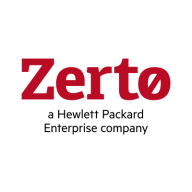

Zerto and Acronis Disaster Recovery compete in the disaster recovery and backup solutions category. Based on the feature set and its robust disaster recovery capabilities, Zerto seems to have the upper hand.
Features: Zerto offers valuable features like hardware-independent replication, simple configuration, and integration with vCenter Server. It ensures continuous disaster recovery with near-zero RPOs, ease of replication, and test failover. Acronis Disaster Recovery is known for efficient backup and recovery functionalities, good performance, and patch management.
Room for Improvement: Zerto users suggest improvements in documentation, and reporting, and supporting multi-platform integration. There's a need for better reporting post-recovery and broader hypervisor support. Acronis would benefit by incorporating real-time backup features, cross-platform support, and stronger documentation, as well as integrating a load balancer.
Ease of Deployment and Customer Service: Zerto provides flexible deployment across on-premises, private, public, and hybrid clouds with excellent technical support and responsive customer service. Acronis supports deployment in public and hybrid clouds and is noted for strong customer service and effective technical support.
Pricing and ROI: Zerto is considered high-cost but offers valuable long-term investment due to its robust feature set, though it could improve its pricing model for flexibility. Acronis is perceived to be more affordable, offering cost-effective solutions, though the perceived value varies based on the user's needs and features desired.


Acronis Disaster Recovery Service is a hybrid cloud, all-in-one, IT continuity solution that protects and restores your data and servers in the event of a natural or man-made disaster. Leveraging the power of the Acronis AnyData Engine, Acronis Disaster Recovery Service can reliably recover your servers or entire data centers without the need for you to invest in duplicate systems or additional staff.
Acronis Disaster Recovery Service can reliably recover your servers or entire data centers without the need for your organization to invest in duplicate systems or additional staff. Providing flexible recovery time objective (RTO) options, Acronis Disaster Recovery Service combines the high performance and shortest recovery time of a local appliance with the low cost, predictability, and accessibility of a virtual private cloud.
Zerto is used for disaster recovery, business continuity, data migration, and ransomware recovery, providing continuous data protection and near real-time replication. Valued for ease of use, efficient failover processes, and versatile integration, it enhances organizational efficiency, reduces errors, and boosts productivity.
We monitor all Disaster Recovery (DR) Software reviews to prevent fraudulent reviews and keep review quality high. We do not post reviews by company employees or direct competitors. We validate each review for authenticity via cross-reference with LinkedIn, and personal follow-up with the reviewer when necessary.